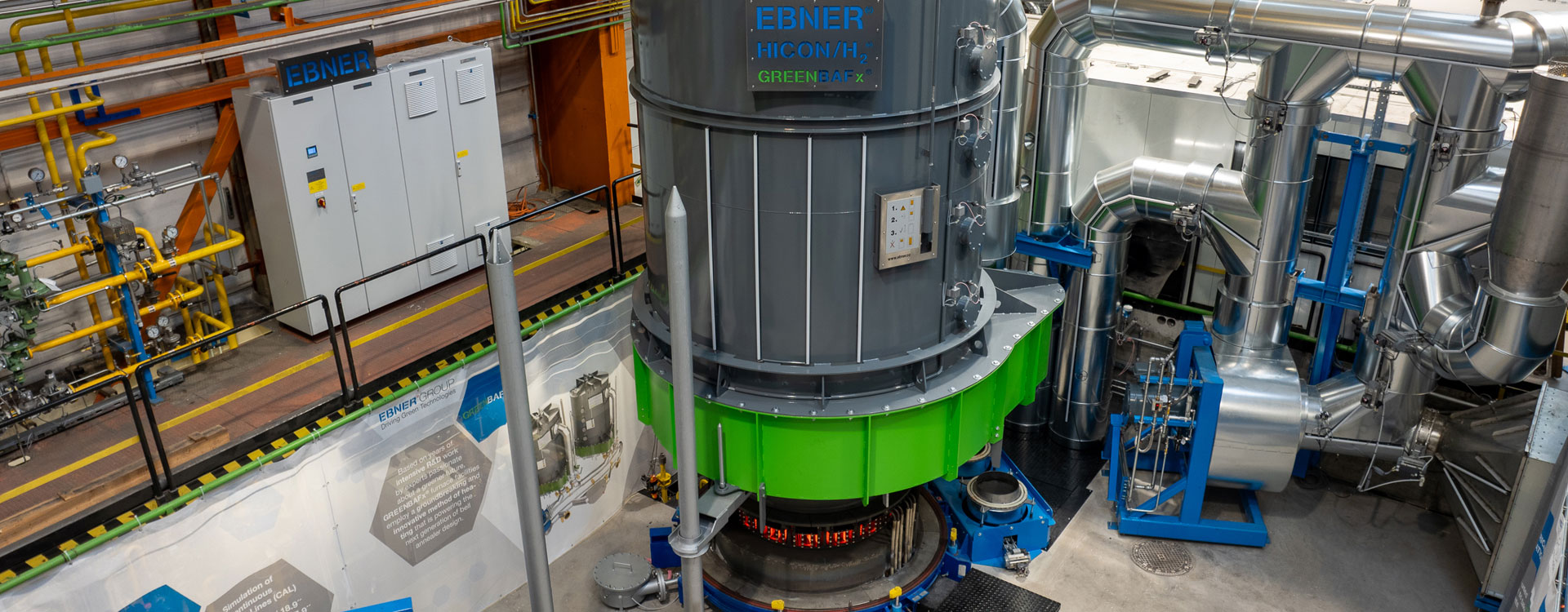From concept to reality: the development of GREENBAFx®

EBNER Industrieofenbau | Sascha Eppensteiner, Vice President Product Management
From concept to reality
How sustainability shaped the development of GREENBAFx® bell annealers.
The industry is under increasing pressure to produce more sustainably and drastically reduce CO₂ emissions. EBNER Industrieofenbau recognized this challenge early on and developed a revolutionary product in the form of the GREENBAFx®: a fully electrically heated bell-type furnace that not only operates emission-free but also offers significantly higher energy efficiency. In this interview, Sascha Eppensteiner, Vice President of Product Management, provides insights into the motivations, challenges, and technological innovations behind this development and shows how sustainability and economic efficiency can go hand in hand.
What drove EBNER to develop a bell annealer with zero emissions, a facility that is also far more energy-efficient than standard facility designs?
EBNER chose this approach to make our facilities fit to face the future, to fulfill future climate-related and environmental regulations and to provide our customers with a competitive “green” product that helps them achieve their goals.
How did the concept of “sustainability” shape the development of GREENBAFx® bell annealers?
EBNER fully supports the idea of sustainability, and it is deeply anchored in our company strategy.
The conservation of natural resources and the reduction of emissions are in our DNA, and they are central elements in all of our new developments.
This approach can be clearly seen in our guiding principle, Driving Green Technologies.
What challenges had to be overcome to develop a sustainable heat treatment solution that was also efficient and cost-effective?
Along with a variety of technical challenges, we kept a sharp eye on costs as we were developing the facility. By this we mean not only the investment costs (CAPEX), but also the operating costs (OPEX) – as across the service life of the facility, operating costs actually make up the majority of the expense.
Reviewing solutions from a Total Cost of Ownership (TCO) standpoint can be awkward at times, as some technical solutions simply turn out to be unprofitable and have to be discarded and rethought.
This happened to us at times during development of the GREENBAFx®.
Was it particularly challenging to eliminate fossil fuels?
The elimination of fossil fuels was indeed a challenge, as we did not want to simply design a normal electric-heated bell annealer facility. We wanted to move forward and revolutionize the way energy is input.
Which technological solutions were decisive in the creation of a zero-emission, energy-efficient process?
One of the most significant features of the design is the innovative method of heating. In this design, an electric heating system with a high power density is integrated into the workbase itself.
We call this a direct heating system. When compared to the standard types of heating systems employed in bell annealers, several steps of the heat transfer process are eliminated and energy is transferred directly from the heating system to the process atmosphere.
Another central element in the design is the process bell, which replaces the heating bell, inner cover and cooling bell of a normal facility. This greatly simplifies operations at the bell annealer facility, as there is no need to exchange heating and cooling bells.
The process bell is tied into a heat exchange circuit, which transfers thermal energy from one workbase to another. This significantly increases energy efficiency. Energy savings of up to 30 % can be achieved.
What factors had to be taken into account during the design process?
With regard to the new heating concept, the changing ambient conditions naturally had to be taken into account. The heating system would now operate within the encapsulated process atmosphere, and would be exposed to any reactions that took place during the process – such as vaporizing lubricants.
Considerable care was taken when selecting the conductor material, as well as when designing the arrays of heating elements. A special temperature/atmosphere program was also developed. This program cleans the heating elements before every anneal.
During development, were there any collaborations with research institutions, universities or companies?
All development was by EBNER, from the initial small-scale trials all the way up to the 1:1 scale prototype in our technical center.
However, an innovative pilot customer could be found for long-term testing in an industrial environment.
Has there been an initial reaction from customers to the new GREENBAFx®, and if so what has it been like?
We have just started to publish information on this development, and have begun to discuss it directly with customers.
Customer feedback has been extremely positive, and we are certain that the new development addresses critical issues.
What arguments will be decisive in convincing customers to switch to a GREENBAFx®?
The most significant arguments will include the elimination of CO2 and NOx emissions, the extremely high energy efficiency, the significant energy savings provided by the heat exchange system and the simplification of operations provided by the process bell. Of course, there are many other advantages.
These features will both assist our customers in achieving their decarbonization goals and increase their competitiveness by reducing their operating costs.
What contributions can the steel industry make to protect the climate, and what role does EBNER play in these efforts?
The steel industry can make a significant contribution to climate protection. The most leverage can be found in the processes used for steel production, where major investment drives have already begun.
However, additional steps are seeing the decarbonization of many “downstream” processes – and EBNER is developing the heat treatment solutions that are needed. One of these is GREENBAFx®, but others include carbon-neutral heating solutions like special electric heating systems for high-performance applications, hydrogen burner technology, energy exchange systems and more.



